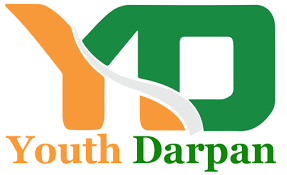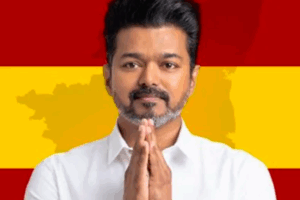The piece accentuates how rising oversight authorities are reshaping the Over-the-Top (OTT) services landscape. It details the compliance headaches these platforms face: aligning with vague forwarding norms, curbing indecency, and repackaging vast libraries to live within shifting policy boundaries. An ongoing dialogue on censorship and broader content governance is unravelled against a backdrop of algorithms, ratings, and disabling functions that rarely appease critics on either end of the spectrum. Practical and ethical dilemmas materialise: who curates the inscrutable archive, how to pre-empt and heal the perils of exposure, and where to situate the dividing line between audacity and hazard. By excavating case law, public appetite, and platform playbooks, the article maps the tangled geometry that centres the services and the institutions now, in a sense, consuming the services.
Initially serving only as hosts, they later expanded into content creation and distribution, including short films, feature films, documentaries, and web series. These platforms provide users with diverse content while also utilizing artificial intelligence (AI) to recommend what they should watch or listen to next, based on user behavior. The research highlights how regulating OTT content in the rapidly evolving digital ecosystem remains a challenge. To foster a responsible and sustainable OTT ecosystem, the study suggests a fair regulatory process while stressing the need for precise and appropriate content monitoring. Notably, regulation of OTT platforms in India has long been a contentious issue, attracting significant attention from various stakeholders.
The lack of specific control over OTT platforms has led to several issues, such as:
-
Censorship of content
-
Classification of age-appropriate material
-
Responsible content creation and implementation
This study examines the role and significance of institutions such as the Telecom Regulatory Authority of India (TRAI), the Department of Telecommunications (DoT), and the Digital Media Content Regulatory Council (DMCRC). It analyzes the existing regulatory framework, censorship of OTT, progressive policy measures in governance, and the way forward through the Information Technology (Intermediary Guidelines and Digital Media Ethics Code) Rules, 2021.
Venkatram & Zhu (2012) emphasized the role of regulatory bodies and policy changes in the growth of India’s telecommunications industry. Several studies found that binge-watching of web series and online video content on OTT platforms is reshaping viewers’ attitudes, behaviors, and social lives (Sung et al., 2015). Vargo et al. (2017) suggested adopting a more dynamic and adaptive approach to cope with rapid technological changes. Laghate (2018) noted that a large audience accustomed to watching entertainment on smartphones greatly benefitted OTT platforms. Kaur (2022) observed that censorship on OTT platforms raises concerns, particularly about exposure to sexually explicit or violent content. Watney (2022) highlighted legal provisions requiring OTT platforms to appoint a compliance officer to ensure adherence to new rules and publish annual reports on efforts to protect users from harmful material.
Unlike films and satellite television, OTT content in India does not undergo any pre-screening or certification. While cinema requires approval from the Central Board of Film Certification (CBFC) and satellite television operates under the Cable Television Networks (Regulation) Act, 1995, OTT platforms do not require prior approval before broadcasting content. Instead, most OTT content is regulated under the Ministry of Information and Broadcasting (MIB) through the IT Rules, 2021, which mandate a code of ethics and a grievance redressal mechanism applicable to all digital media platforms.
The literature review reveals persisting ambiguity regarding OTT censorship in India. Platforms continue to struggle with self-censorship, compliance with existing laws, content classification, age-based restrictions, and effective grievance redressal. Consequently, the Indian government has taken steps in recent years to regulate OTT content. As per the rules, every OTT platform must self-classify its content into specific categories and enable parental controls for content rated U/A 13+ or above. However, most OTT platforms still rely on self-regulation, and their content policies differ significantly, resulting in a lack of uniform standards and reinforcing the need for stronger regulation and oversight.
Challenges
OTT platforms in India face several regulatory challenges:
-
Censorship of content – A persistent and sensitive issue.
-
Lack of clear rules – Leading to confusion in content moderation, a problem also observed in traditional media.
-
Self-censorship dilemma – Struggles to balance freedom of expression with regulatory compliance.
-
Legal complexities – Navigating between the Information Technology Act and other relevant laws creates compliance difficulties.
-
Protection of vulnerable groups – Ensuring proper classification, age-appropriate content, and content diversity.
-
Weak grievance redressal mechanisms – Need for more effective systems to handle user complaints.
If censorship and regulatory powers are granted to the CBFC, it may face challenges similar to those broadcasters encounter in dealing with obscenity and indecency. Critics also accuse OTT platforms of showing violent, hateful, and religiously offensive content. Netflix’s maturity ratings have been controversial, with claims that its content could harm viewers. Cybersecurity threats and the digital divide further complicate the landscape.
The Way Forward
-
The Ministry of Information and Broadcasting (MIB) has taken charge of OTT regulation, previously overseen by the Ministry of Electronics and Information Technology (MeitY).
-
Future policy must account for convergence, the digital divide, and technological innovation.
-
Convergence refers to the delivery of voice, video, and data services over a single medium, a trend accelerated by IP-based next-generation networks, offering services at lower costs than traditional networks.
-
TRAI’s objectives include enabling a smooth transition of services and technologies. The National Telecom Policy (NTP) 2012 also emphasized convergence.
-
Many OTT services provide communication features, prompting telecom providers to demand similar regulations for them.
-
In April 2015, TRAI released a consultation paper on the regulatory framework for OTT services, which also considered net neutrality and internet telephony.
-
Coordination between different regulatory authorities (e.g., RBI and TRAI) will become increasingly important in the future.
-
While digital media must comply with the Information Technology Act, newspapers and TV channels are not bound by it. Excessive regulation could threaten democratic freedoms, making cautious approaches essential.
Conclusion
The study makes it evident that OTT platforms are gaining influence but continue to face multiple regulatory challenges. Content classification and age-based restrictions are crucial for protecting vulnerable viewers. Strengthening grievance redressal mechanisms is also imperative. In India’s rapidly evolving digital landscape, OTT platforms struggle with regulatory ambiguities and the tension between creative freedom and responsible moderation. If the CBFC assumes regulatory authority over OTT content, it will face challenges similar to those concerning obscenity and indecency in broadcasting. Additionally, cybersecurity and the digital divide remain key concerns. Ultimately, this research advocates a balanced regulatory framework—one that combines legal oversight with self-regulation—to strike the right balance between creative freedom and responsible content consumption on OTT platforms.
References
- Singh, T. K., & Khattri, N. (2025, March). Navigating media regulation and censorship in over-the-top platforms. https://doi.org/10.13140/RG.2.2.17790.50241
- Lee, S. Y., & Kim, M. S. (2018). Social capital and binge-watching on over-the-top content platforms. Journal of Broadcasting & Electronic Media, 62(2), 276-294.
- Zittrain, J. L., Faris, R., Noman, H., Clark, J., Tilton, C., & Morrison-Westphal, R. (2017). The Shifting Landscape of Global Internet Censorship. SSRN Electronic Journal.
- Wolfe, R. (2003). Regulatory Transparency, Developing Countries and the WTO. World Trade Review.
- Deshwal, P. (2023). Addiction Or Innovation In Entertainment: Consumption Of OTT Platforms Among Indians. International Journal of Creative Research Thoughts (IJCRT).





Add Comment